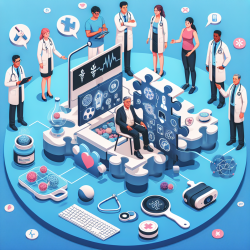The world of clinical trials is evolving rapidly, and decentralized clinical trials (DCTs) are at the forefront of this transformation. A recent research article, "Application of Internet of Medical/Health Things to Decentralized Clinical Trials: Development Status and Regulatory Considerations," highlights how the Internet of Medical Things (IoMT) and the Internet of Health Things (IoHT) are revolutionizing the way clinical trials are conducted. As a practitioner, understanding and implementing these advancements can significantly improve your practice.
Understanding IoMT and IoHT
IoMT and IoHT refer to the integration of medical devices and healthcare applications with internet connectivity, enabling real-time data collection, remote monitoring, and telemedicine. These technologies are crucial for DCTs, which reduce the need for physical visits to clinical sites, thus expanding access to clinical trials for patients who face geographical and time constraints.
Key Technologies and Their Applications
The study identifies several key IoMT/IoHT-based technologies expected to be utilized in DCTs:
- Telemedicine: Enables remote consultations and patient monitoring, reducing the need for in-person visits.
- Remote Monitoring: Wearable devices and sensors that track patient vitals and health metrics in real-time.
- Virtual Reality (VR) Therapy: Used for rehabilitation and mental health treatments, providing immersive therapeutic experiences.
Benefits of Implementing IoMT/IoHT in Your Practice
Integrating these technologies into your practice can offer numerous benefits:
- Enhanced Patient Access: Patients who cannot visit clinical sites due to distance or time constraints can still participate in trials.
- Improved Data Quality: Real-time data collection from wearable devices ensures accurate and continuous monitoring.
- Cost Efficiency: Reducing the need for physical infrastructure and in-person visits can lower overall trial costs.
Regulatory Considerations
While the adoption of IoMT/IoHT offers significant advantages, it is essential to navigate the regulatory landscape carefully. The study highlights the need for compliance with guidelines from regulatory bodies like the FDA, EMA, and PMDA. Ensuring data quality and privacy are critical components of these regulations.
Next Steps for Practitioners
To effectively integrate IoMT/IoHT into your practice, consider the following steps:
- Stay Informed: Keep up with the latest developments in IoMT/IoHT through conferences, publications, and webinars.
- Collaborate: Network with other practitioners and organizations to share insights and best practices.
- Invest in Training: Ensure your team is well-versed in using these new technologies and understanding regulatory requirements.
By embracing these advancements, you can enhance your practice's efficiency, improve patient outcomes, and stay ahead in the ever-evolving field of clinical trials.
To read the original research paper, please follow this link: Application of Internet of Medical/Health Things to Decentralized Clinical Trials: Development Status and Regulatory Considerations.










